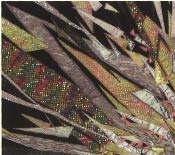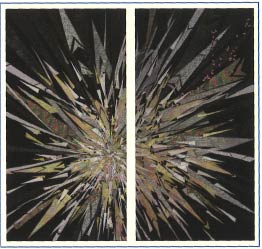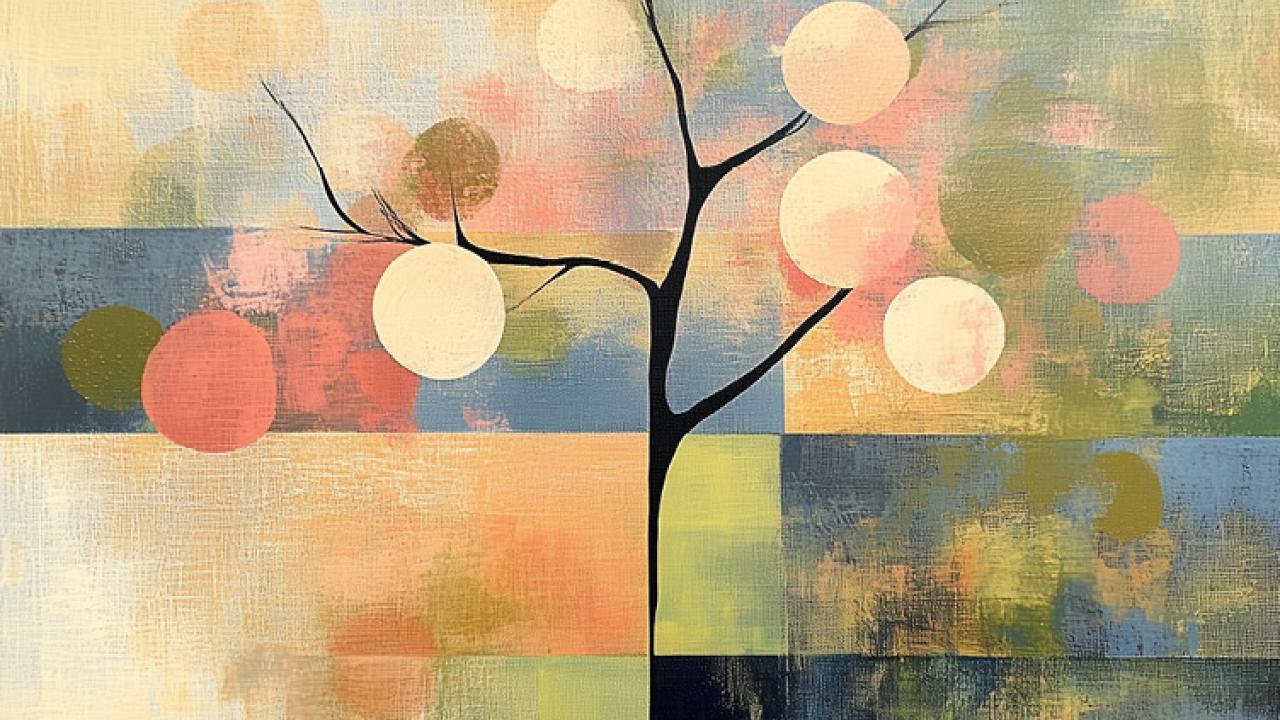Visually many of our celebrations around Advent and Christmas feature light as a main ingredient. Lighted trees, sparkling stars, warm candlelight, glistening snow, bright reflective wrapping and bows—all are turned on “high” during this season. Yes, we’re fighting off long grey days and even longer dark nights—but in so many ways we’re reminding each other that even though darkness is all around, the Light has come.

Burst
Jeanne Logan teaches design at Indiana University. She created the visual Burst (right) for her church for Lent. I think this art isas perfect for reminding us of the “shining forth” of Epiphany as it is for suggesting the earthquake that shook the garden when the angel came and rolled the stone away.
With Jeanne’s gracious permission, it is reproduced here to inspire you to create something that can shine during Advent and Christmas and on through Epiphany (the twelve days after Christmas).

What Makes an Artist?
I asked Jeanne a few questions about the art and about herself:
How big is this piece? What materials did you use, and how long did it take you?
This piece is two panels, each 3 by 7feet. Although it was initially hung on two separate walls, the church now hangs them together, and itis much more effective. It took forty to fifty hours to create and sew; probably another eight hours to gather all the fabric. It’s made of ready to-use purchased fabrics: all glitzy, sparkly, sequined, party fabrics. I used iron on adhesive, cut many pieces from each fabric, stacked them, and used them like a palette of colors as I created the final design. After they were in place, I ironed the whole piece to activate the adhesive, and then quilted each of the shapes. It is the quilting that makes the final piece so rich. Before the stitching, it was quite nice—but very flat.
How do you like to work?
If a piece is for a church, I usually do some theological research and together we discuss ways of integrating their physical needs and theological references. Eventually, I take everything I’ve learned and go to my studio to work. Unless I’m collaborating with someone, I work alone in my studio.
You’re obviously an accomplished artist. Where did it all begin?
I’ve been drawing and sewing since I was a child. My grandmother and mother taught me the beauty and craftsmanship in creative sewing. But it wasn’t until I was in graduate school at the University of Notre Dame and met Barbara Peterson, the fiber professor, that I thought about using fabrics for my media.
A colleague of mine recently mentioned that she would love to paint, but it’s the paint that intimidates her. Not the canvas, not the brushes, the paint! What advice can you give the artist-wannabes among us?
I tell my students: It’s only paper! I fit doesn’t work, throw it out! And I have lots of paper on hand so they don’t runout. People often get tied up in the idea that everything they create has to be a masterpiece. When I dye three yards of fabric, I can only hope that there will be one beautiful yard. And sometimes I still start over completely.
Any last words?
“Banner.” I never use the term for my own work—and suggest that other artists also avoid it. The term is often synonymous with quick, cheap, and disposable—a concept that probably comes from the proliferation of felt and burlap “banners” in the back of church closets.

